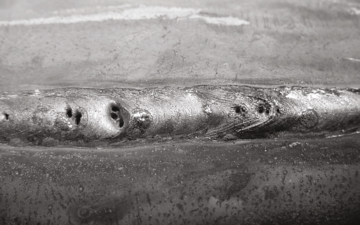Recognizing Porosity in Welding: Exploring Reasons, Results, and Avoidance Techniques
Porosity in welding is a persistent difficulty that can considerably impact the top quality and integrity of welds. As professionals in the welding industry are aware, understanding the reasons, effects, and prevention techniques connected to porosity is crucial for attaining robust and trustworthy welds. By diving right into the source of porosity, analyzing its harmful impacts on weld quality, and discovering efficient prevention techniques, welders can enhance their expertise and skills to generate premium welds consistently. The intricate interplay of elements adding to porosity requires an extensive understanding and a positive method to guarantee successful welding end results.
Typical Reasons of Porosity
Contamination, in the type of dust, oil, or rust on the welding surface area, develops gas pockets when heated up, leading to porosity in the weld. Incorrect shielding happens when the protecting gas, generally utilized in processes like MIG and TIG welding, is unable to fully safeguard the molten weld pool from responding with the surrounding air, resulting in gas entrapment and succeeding porosity. Additionally, poor gas coverage, commonly due to inaccurate circulation rates or nozzle positioning, can leave components of the weld vulnerable, enabling porosity to create.
Results on Weld Quality
The existence of porosity in a weld can significantly compromise the overall high quality and stability of the bonded joint. Porosity within a weld produces gaps or cavities that compromise the structure, making it a lot more prone to cracking, rust, and mechanical failing. These spaces work as stress and anxiety concentrators, reducing the load-bearing capacity of the weld and boosting the chance of early failing under used anxiety. Furthermore, porosity can likewise function as potential sites for hydrogen entrapment, additional aggravating the deterioration of the weld's mechanical residential properties.
Furthermore, porosity can prevent the efficiency of non-destructive screening (NDT) techniques, making it testing to detect various other defects or suspensions within the weld. This can cause substantial security issues, especially in crucial applications where the structural stability of the welded parts is paramount.

Avoidance Techniques Introduction
Provided the detrimental impact of porosity on weld quality, effective prevention techniques are important to keeping the structural integrity of welded joints. Among the primary prevention techniques is detailed cleaning of the base materials before welding. Impurities such as oil, grease, corrosion, and dampness can add to porosity, so making certain a clean work surface area is important. Appropriate storage of welding consumables in completely dry conditions is also essential to protect against moisture absorption, which can bring about gas entrapment throughout welding. In addition, selecting the appropriate welding criteria, such as voltage, current, and take a trip speed, can aid reduce the threat of porosity development. Making certain appropriate securing gas flow and insurance coverage is another important prevention strategy, as insufficient gas protection can cause climatic contamination and site web porosity. Appropriate welder training and certification are crucial for carrying out preventive steps successfully and regularly. By including these avoidance techniques into welding methods, the event of porosity can be significantly decreased, resulting in more powerful and more reputable bonded joints.
Relevance of Correct Protecting
Proper shielding in welding plays a crucial function why not try here in avoiding climatic contamination and making certain the integrity of welded joints. Securing gases, such as argon, helium, or a mixture of both, are generally utilized to safeguard the weld swimming pool from responding with elements in the air like oxygen and nitrogen. When these reactive components enter into contact with the warm weld swimming pool, they can cause porosity, bring about weak welds with decreased mechanical residential properties.

Insufficient shielding can result in different problems like porosity, spatter, and oxidation, compromising the architectural integrity of the bonded joint. Therefore, sticking to correct securing practices is vital to create high-quality welds with very little problems and make certain the Discover More Here longevity and integrity of the bonded components (What is Porosity).
Tracking and Control Techniques
Just how can welders successfully check and control the welding process to guarantee ideal outcomes and avoid issues like porosity? One trick method is through the use of sophisticated surveillance innovations. These can include real-time monitoring systems that provide feedback on parameters such as voltage, current, travel rate, and gas circulation prices. By continually keeping track of these variables, welders can identify discrepancies from the ideal conditions and make immediate adjustments to avoid porosity formation.

Furthermore, executing appropriate training programs for welders is essential for monitoring and managing the welding process properly. What is Porosity. Enlightening welders on the significance of keeping regular specifications, such as proper gas shielding and take a trip speed, can help prevent porosity issues. Regular analyses and accreditations can additionally ensure that welders excel in surveillance and controlling welding processes
In addition, making use of automated welding systems can enhance monitoring and control abilities. These systems can precisely manage welding parameters, lowering the possibility of human mistake and ensuring regular weld high quality. By incorporating sophisticated surveillance technologies, training programs, and automated systems, welders can successfully check and control the welding process to lessen porosity defects and achieve high-quality welds.
Verdict
